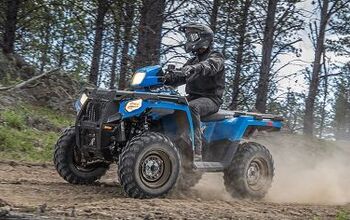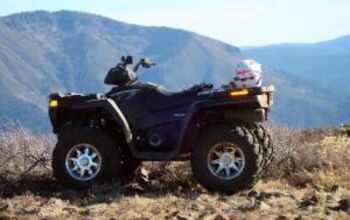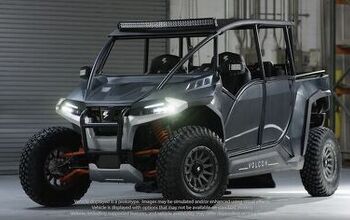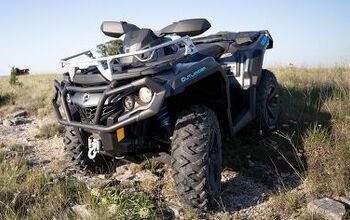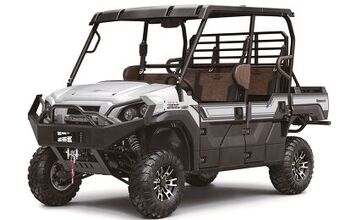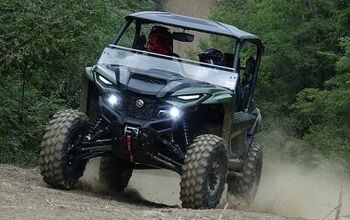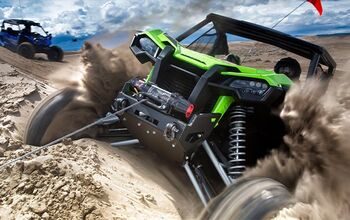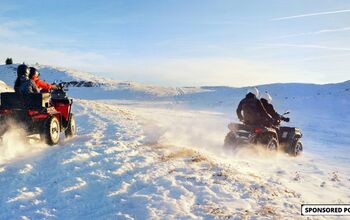2015 Yamaha Raptor 700R Review
The old saying “Why fix what’s not broken?” is more than appropriate when talking about Yamaha’s wildly popular Raptor 700R, which happens to be touted as the best selling sport quad in history by a proud Yamaha Motor Corp. However, not content to sit back and just watch the sales number roll in, Yamaha still strives to tweak and improve the popular model each year, while maintaining the very characteristics that have continued to put it on top.
Looking forward into 2015, Yamaha will still offer the “non” R version of the Raptor 700 as well as the Special Edition Raptor 700R (complete with some cool factory add-ons and a unique color scheme), in addition to the Raptor 700R – but, for now, we had the opportunity to spend some quality time on the 2015 Raptor 700R model in the unique and beautiful dunes near Winchester Bay, OR. With its steep, sharp transitions and challenging hill-climbs, we couldn’t think of a better riding spot to get a feel for the updated model.
What’s New
Before we threw a leg over the new Raptor and took it out for a test ride, we spent some time getting acquainted with what Yamaha did a little differently (dare we say, better?) on its 2015 Raptor 700R.
Yamaha squeezed about 10% more power out of the 686cc Single for 2015.
First and foremost, Yamaha found a way to squeeze out another 10% of power from the engine. This was done by redesigning the camshaft, cylinder head, creating a new muffler to work with the new single port exhaust, and by adding an AI system. The cylinders and rods are also newly designed, with an increased compression ratio of 10.0:1, giving the Raptor just a bit more “revability” to go along with its power increase.
An added bonus to Yamaha’s requirement to meet today’s tough emissions standards comes in the form of an 8% increase in fuel economy! Not a big deal most of the time, but it could mean the difference between finishing that longer-than-expected ride on fumes or walking back to camp.
We always say that more power doesn’t mean much if you can’t get it effectively to the ground, so in addition to the motor upgrades on the 2015 Raptor 700R, Yamaha also made changes to the overall comfort and handling of their updated machine.
Beyond the extra power, Yamaha made modest changes to the Raptor 700R’s suspension to improve handling.
While the 2014 Raptor 700R has what we consider great suspension from the factory, the 2015 model sports some changes that were designed to help the rider feel even more comfortable through the whoops and rougher trails. Though not really noticeable to the naked eye, Yamaha lengthened the rear shock spring by 5mm to 262mm, which helped increase the stroke in the shock by a hair. To get technical, the actual spring rate was changed from 20-28Nm to 22-30Nm. These aren’t major changes, but constantly refining how its machines handle in the environments that most people ride them in is what makes Yamaha one of the best in the business.
Another change worth noting is Yamaha’s switch from the factory DID “T-Ring” chain to a DID “X-Ring” chain. This was done to improve the life of the chain and to provide better protection from destructive elements such as dirt and water. Having used DID’s X-Ring chains on our race quads in the past, we were happy to see Yamaha going this route.
Ride Report
While it’s always interesting to do a walk around with a new model and get a peek at it up close, the fun begins when it’s time to go test it out and see what it can do. Now, the Raptor does hold a soft spot in my heart – I had a 2001 Raptor 660 for a long time. As a matter of fact, I bought one of the first ones that hit the showroom floor after it was finally released to the dealers. I can still remember thinking “What am I doing on this thing?” the first time I tried to ride it around our local track. It was such a beast, and I loved it because it was just begging to be tamed – and I was always looking for a challenge!
These days, with the newer versions of the Raptor, handling has improved considerably and so has the power band, but the Raptor 700R is still as formidable as ever and a blast to ride.
As always, the Raptor 700R is a blast to ride. It is absolutely at home tearing up the sand dunes.
We headed out into the dunes on a foggy, eerily beautiful morning, and spent plenty of time getting the feel for the new 2015 model. Traction was perfect, and right away we could feel the power hook up. The very first thing we noticed was a bit more feedback through the larger front tires in the smaller chop, but as soon as we hit our first whoop section, we understood and appreciated the change in tire size, as the front end was more forgiving and the tires helped to soak up the deep, rough whoops while keeping hand and arm fatigue at bay. With the torquey motor, it was also easy to get the front end up a bit and keep it up through the longer whoop sections.
The nimble handling of the 2015 Raptor 700R paid off, as the trails we were flying through all day were tight, narrow, and full of tree roots and errant tree branches, making it important to have a quad that reacted quickly and precisely.
Larger front tires help soak up some of the abuse doled out by gnarly whoops sections.
While we weren’t running any paddles in the dunes, the OEM Maxxis tires did a great job of grabbing traction and we were able to climb all but the steepest, softest dunes. The power of the new Raptor 700R comes on strong and stays strong throughout, while the low end torque allowed us to lug around in third gear as much as we wanted, or drop it down a gear and lift the front end at will on any incline just for fun.
It could be this our imagination, but it also seemed that with the slight changes in the shocks, it made riding in a seated position much more comfortable and do-able, even in the rougher terrain we encountered. The seat on the Raptor is very comfortable, and that’s something else that hasn’t changed – the Raptor is a machine that can be ridden all day, whether you are an aggressive rider or prefer to enjoy the scenery a bit more. It just won’t fatigue you the way some other sport machines will. Riding in a standing position on the Raptor is just as comfortable as sitting, and the transitions between the two are pretty much effortless, thanks to the well thought out factory ergonomics.
Final Thoughts
Ah, the Raptor. It’s one of those machines that will make you want to glance back at it after you have parked it and are walking away – because it just looks like a handful of fun and roost. We are pleased that Yamaha hasn’t changed the fundamentals of what makes the Raptor such a great machine – its looks, its big torque, its solid axle handling and its more-than-handy reverse gear.
We are happy to report that Yamaha hasn’t done anything to take away the grin factor the Raptor 700R always produces.
It’s also nice that Yamaha has a full line of aftermarket goodies available to wake the Raptor up even more and add to its already great performance. It’s easy to add a GYTR programmed Power Commander, a GYTR by FMF Powercore 4 Hex Muffler, and any number of intake components to really maximize the power of the 700R.
With an MSRP of $8,199, look for the 2015 Raptor 700R to hit dealer floors in the very near future, which could make for some very satisfying Christmas shopping this year!
More by ATV.com Staff



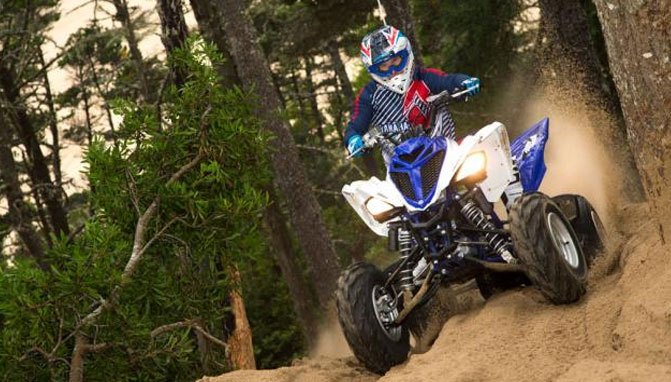












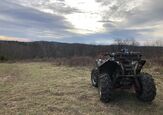

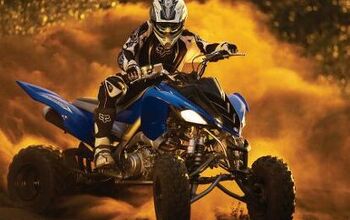

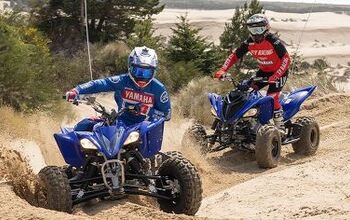
![2011 Yamaha Raptor 700R & YFZ450R Special Edition Review [Video]](https://cdn-fastly.atv.com/media/2022/10/24/8748167/2011-yamaha-raptor-700r-yfz450r-special-edition-review-video.jpg?size=350x220)

